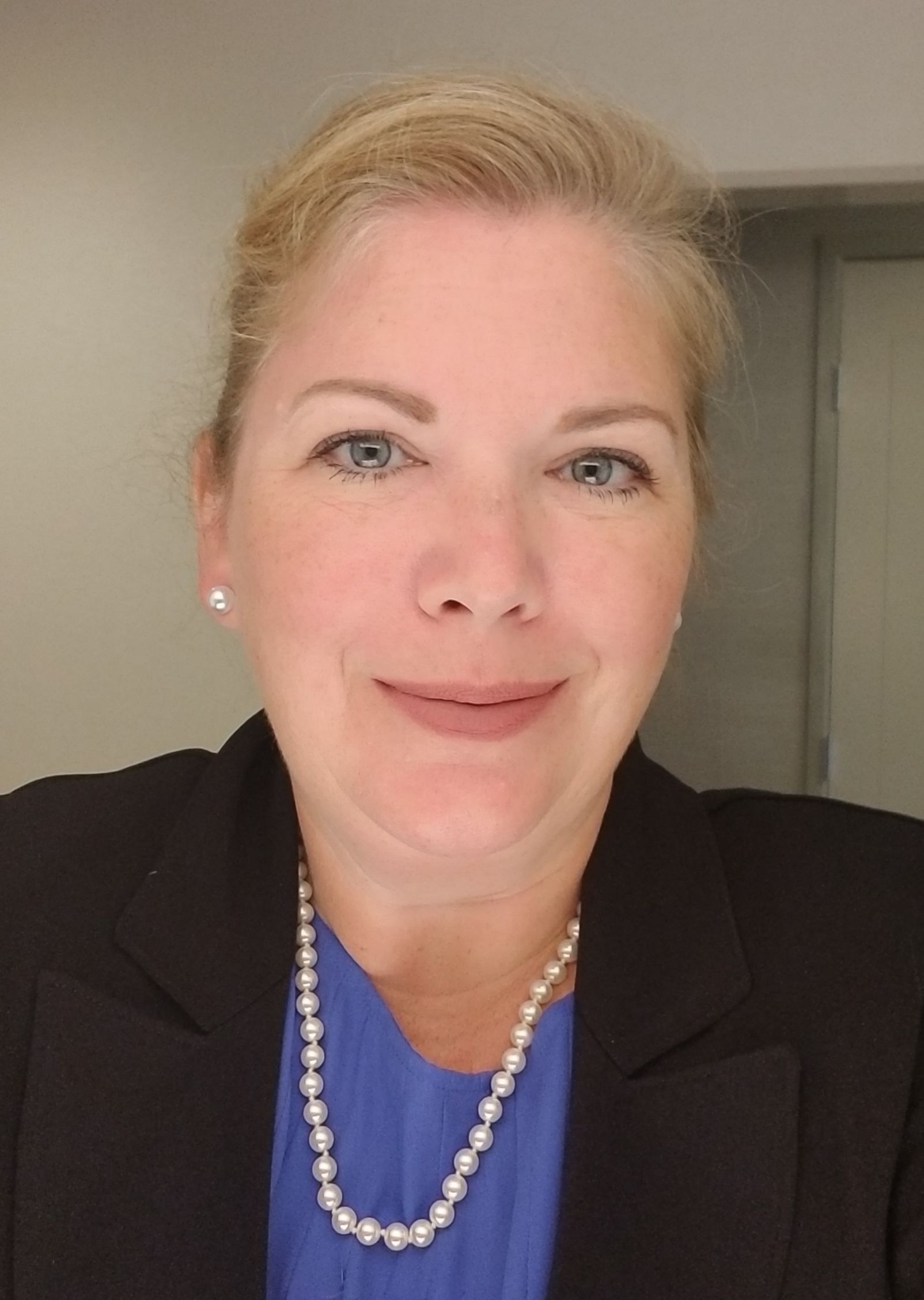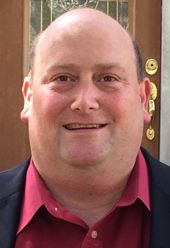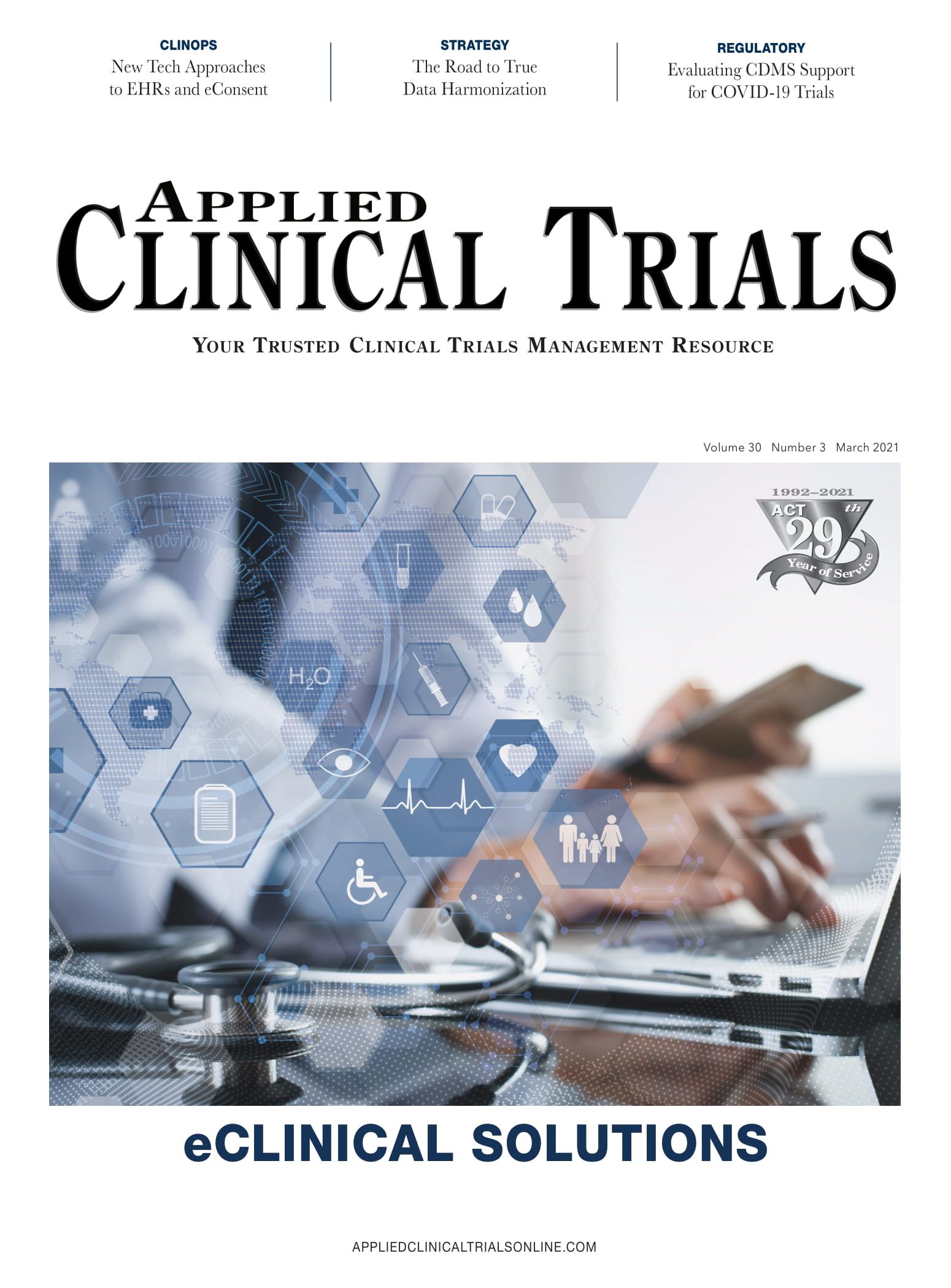The Road to True Data Harmonization
eClinical, eSource and EHRs is the journey to the holy grail of data efficiency in clinical trials.
Before we discuss how some seriously smart people have been working to improve clinical trial efficiency, it might make sense to nail down some definitions, namely, eSource and eClinical.
But nails can’t be used here; tacks are more appropriate, since definitions differ slightly, depending on the stakeholder who’s speaking. FDA, which coined the term a few years ago, puts the definition bluntly: Electronic Source Data—Data initially recorded in an electronic format. Trans Celerate BioPharma, a non-profit consortium whose members provide and share data, divides eSource into four groups: non-case report form; devices and apps; direct digital entry at the trial site; and patient-sourced EHRs.

A more-to-the-point way of defining eSource and eClinical: eSource is part and parcel of eClinical, said Craig Lipset, adviser and founder of Clinical Innovation Partners. Trials require data, regardless of how the information is recorded, accessed and delivered. The data that live in hospitals, urgent care centers, doctor’s offices and elsewhere are coveted by trial sponsors. They want it standardized, in a cloud, available from EHRs everywhere.
To standardization pioneers, how that information is recorded, accessed and delivered matters immensely.
In the eSource world, the concern is identifying the data’s headwaters—which lab, which hospital, which clinic. It concerns standardizing these data —this lab result has a blood glucose level, but the script said get an HbA1c. And it’s about establishing a common entry language—milliliters or microliters.
Data aggregation is a means to an end, not the other way around. ESource has been around a long time, said Lipset. “The new hook is, can I get it out of an EHR system, and that is the challenge.”
In the eClinical space, the path back to the EHR bedside with new treatments involves trekking through aggregated, standardized streams of data to find the right patients; have them e-sign their consent; visit trial sites, maybe in virtual mode, with updates; and include all other pertinent information, including from labs, pharmacies and
digital devices.

But the key, said Amy (Nordo) Cramer, MMCi, BSN, RN, director, Global Product Development at Pfizer, is “We need real-world evidence while focusing on reuse of data from EHR—we need to extend the domains we are using.”
Trial sponsors want reusable data, and e Source standardization can do that. A study on hypertension in patients with diabetes will likely have aggregated information on race, gender and prescribed medications, all pertinent information for another trial looking at hypertension
and race.
The clinical trial pioneers also want to change the way physicians and healthcare systems think about their EHRs—not as discrete, localized sources of patient information, but as real-world contributors in the advancement of science and patient care.
In the past few years, there’s been some standardization progress. Diverse stakeholders who are interested in the cause have joined the pioneers. A new FHIR platform standard (Fast Healthcare Interoperability Resource) called Vulcan, was created in September 2019 to bridge the long span, and the longstanding disconnect regarding handling data and workflow that exists between healthcare systems and clinical researchers. This new accelerator is sponsored by TransCelerate and has mighty champion in Pfizer and a home in HL7. Cramer is co-chair of the Vulcan steering committee.
Research, healthcare barriers
As for progress on adoption of EHR standardization and eClinical in general? Apparently, it could be better to serve the twin needs of finding the appropriate clinical trial participants and improving data quality and interoperability for clinical trial efficieny.

“The research world has to wake up,” said one pioneer, Wayne Kubick, chief technology officer, HL7. “What the FHIR standard does is give [trial sponsors, PIs] a common window to look at and exchange standardized electronic health data and see how it looks. The idea is, tap into any patient in the US. There is a whole lot of data that will help you ID potential [trial] patients.”
Another reason to wake up: FDA loves eSource. It is urging sponsors and researchers to use eSource to eliminate manual re-entry and data errors. FDA isn’t offering a quid pro quo but certainly is extending a large carrot: give us recognizable, readable data so we can verify its quality and accuracy when needed, and your application will move quicker towards a decision.1
But it’s not just a problem on the clinical research side. On the healthcare side, the places where the data live and the folks who control much of it aren’t quite ready to fall in line.

“Hospitals don’t want to share data because of fear of losing patients. Doctors worry about losing patients to big hospital systems,” said Rob Nauman, principal, BioPharma Advisors and former SVP, business development, Practice Fusion.
Moreover, many commercial hospital systems aren’t willing to go through the process of having their data standardized. Their size, patient care mission and focus on economic survival are keeping them well occupied, said Kubick.
However, there is a shining spot in the academic institutions, which are different. Memorial Sloan Kettering, Duke and Columbia have been practicing standardization for some time. As both healthcare and research centers, these institutions are more likely to adopt streamlined approaches to facilitate both sides of the patient-facing coin.
However, as Lipset points out, data live in many places, such as in free-text notes or in one-off healthcare facilities. An emergency department that treats the broken leg of an out-of-state vacationer has that person’s records. Trying to converge those various records, let alone ensure the data’s accuracy, requires perseverance at many levels. Data transcription errors come easy, said Michael Buckley, manager, Enterprise Innovation, Clinical Research Administration for Memorial Sloan Kettering Cancer Center (MSKCC), and a member of Vulcan and the Society for Clinical Data Management (SCDM), eSource Implementation Consortium. The data coordinator can easily lose their place inputting data from a patient site visit onto one screen, and then transcribing that information into the sponsor’s database.

Other obstacles: Hospitals customize their EHR systems and the systems are internal, not cloud-based. “[EHRs] are designed to be able to share information,” said Robert Kocher, MD in an NPR interview.2 Kocher, who is a partner in the venture capital firm Venrock and an architect of the ACA, added, “But that only happens when a patient requests for it
to happen.”
So the reality is, said Jim Streeter, global vice president, Life Sciences Product Strategy, Oracle Health Sciences, fewer than 1% of trials use trial data gathered at patients’ sides.
(However, said Kubick, real-world data from EHRs has been used to supplement trial data for some time.)
Pharma, said Nauman, wants to uncover ways to research, find and manufacture innovative medicine, but at scale. “If pharma is on the hunt for innovation, they also are on the hunt to find patients. They have to do it faster, quicker, better. Current CRO methods are expensive.”
The hunt for eClinical efficiencies
A few numbers about the growth of clinicaltrials.
In 2014, 70 interventional studies were completed, according to clinicaltrials.gov. In 2020, that completion figure was 104.
Trial design protocols are getting more complex. A Tufts study from 2018 looked at 9,737 protocols and 130,601 investigative site contracts. All phases showed more steps to completion, including more patient site visits and more procedures performed at those visits.3
A 2016 study broke down costs for trials conducted between 2004 and 2012. Without including site overhead and study monitor costs, the three largest expenditures were trial procedure costs, about 18% of the total; administrative staff, between 11% and 29%; and site monitoring, between 9%
and 14%.4
Last month, Tufts again looked at how complex clinical trials have become, and that complexity’s impact on trial management. Based on 220 completed protocols spanning many countries and specialties, the report said that since 2009, the mean number of Phase II and Phase III procedures increased 44% and the mean number of sites has gone up 33%. As for data points, Phase III trials now create an average of 3.6 million data points. This figure has tripled in 10 years.5
Talking ROI is a moot issue at this point. But it can be imagined, considering that some small studies have shown significant time savings and near flawless data accuracy. Besides the savings that would come from not cleaning any data, since it’s coming directly from the source, and not having the site input data, the ROI will come quicker, said Streeter. Especially the lab data, which can take up to one hour per lab per patient to manually enter. Not having to access and clean these data “will save a lot. The money will be substantial.”

What matters, said Streeter, is time and keystrokes. The longer a site takes to enter data, the more quality issues emerge, and so more queries are generated. There is also the issue of urgency—the longer the delay in entering, the quicker the trial isn’t top of mind for site personnel. Before eClinical, sponsors waited up to two months for trial results. Today, it’s about a week, which is not bad according to Streeter.
In the trial start-up space, times have also shorted. Using a randomization and trial supply management system, or RTSM, regardless of the number of sites, can have a trial ready to roll in three weeks, down from three to four months, Streeter said.
And yes, every COVID vaccine trial used eClinical systems and their modules to the nth degree. Virtual patient-site visits can work. Said Kubick: “COVID forced people to rely on data, to work virtually, so they have warmed up a little more. We had to make it work, now…we have to work for the betterment of care worldwide. It is time to capitalize on that.”
The eClinical solutions market is hinting at its growing valuation.
In 2018, Precedence Research valued the market $5.06 billion; Markets and Markets predicted it rise to $7.61 billion in 2022. This past December, with no doubt COVID factored in, Wise Guy Reports deemed its market valuation at $17.5 billion
in 2024.
Proof of data harmony
The pioneers have looked at efficiency and accuracy gains. Buckley said MSKCC conducted one study (unpublished) regarding accuracy gains with eClinical. The transcription errors decreased 6.7% when inputted at the patient level. ESource frees up the data coordinator, he said, to do other important work, such as trend analyses. Coordinators, he said, could now “work for the patients who are in the trial.”
Cramer, who has an academic background, did a pilot study in 2017 with fellow Duke University colleagues to test for time and error reductions, between eSource and manual entry. Participants entered clinical registry information from a single center obstetrics/gynecology registry. They found a 37% reduction in time using eSource vs. manual entry. Transcription errors were also reduced, the authors reported.6
And university hospitals treating the same disease, and use different EHR systems are finding commonality in data language. For example, one study group looked at acute myeloid leukemia data from two university hospitals. They compared the common data elements, routine documentation and case report forms of patients with AML. The groups identified 3,265 concepts among the collected documentation; about one-third were unique. Of the latter, the 50 most frequent concepts covered 27% of all concept identifications, and the top 100 were identified in 40% of all concept identifications. The conclusion: the study uncovered “the existence of a core data set and an exemplary reusable implementation for harmonized data capture.”7
Vulcan
Vulcan includes FDA as a member; it is arguably a behind-the-scenes nudge for this new accelerator.

Buckley said that in 2016, CDER (Center for Drug Evaluation and Research) wanted to discuss eSource with him and two trial sponsors, Eli Lilly and Novartis. CDER’s Mitra Rocca, now Senior Medical Informatician at CDER, challenged the three to “move the needle forward” on the benefits of eSource adoption by spreading the word among all stakeholders.
That was the start of the SCDM, eSource Implementation Consortium, Buckley said. Vulcan came along three years later.
The pioneers found a broadened community in Vulcan. Vulcan is unlike the six other HL7 accelerators, because the founders wanted as many diverse stakeholders as possible. “To move the industry forward, we needed to work collectively,” said Cramer. “It was lack of awareness. Vulcan allows for that awareness.”
The Vulcan group includes patient advocacy groups, providers, academic medical centers, pharma, large tech companies, vendors, the NIH and the Office of the National Coordinator for Health Information Technology.
Vulcan, said Cramer, has a “large advisory group…It allows us to lean on emerging companies and to be advised by thought leaders in this industry.” The larger organizations contribute to Vulcan’s operating expenses, the non-profits provide their thought leadership, Cramer said.
With Project Vulcan, said Streeter, members are trying to find a way to standardize HL7 access to data through EHR systems, and make them readily accessible for use in clinical trials. “We all had this [idea] why not get it direct from EHR systems?” Cramer added that Vulcan is developing standardizations for many use cases, including adverse events.
Kubick said interest and participation in Vulcan is high; Cramer said the group is adding members every day. “We are encouraged by the cross-section of stakeholders.”
The naysayers are especially welcome, Cramer said. “There are always going to be people out there in the community who haven’t realized this change is coming.” By demonstrating that standardization isn’t just a theory, there will be fewer and fewer naysayers, she said. Naysayers “open up the opportunity to do something better.”
References
- Guidance Document. Use of Electronic Health Record Data in Clinical Investigations, Guidance for Industry, July 2018
- Why Issues With Medical Records Interfere With Vaccine Rollouts. NPR,February 10, 021
- Kenneth A. Getz, Rafael A. Campo. New Benchmarks Characterizing Growth in Protocol Design Complexity. Clinical Trials: Original Research. Dec. 30, 2018.
- Sheila K. Pierson, et al. ACCELERATE: A Patient-Powered Natural History. Cell Reports Medicine; 2020 Dec 22;1(9)
- Aylin Sertkaya, Hui-Hsing Wong, A. Jessup A, Trinidad Beleche. Key cost drivers of pharmaceutical clinical trials in the United States. Clin Trials. 2016 Apr;13(2):117-26.
- Amy Harris Nordo, Eric L. Eisenstein, Jeffrey Hawley, Sai Vadakkeveedu, Melissa Pressley, Jennifer Pennock, Iain Sanderson. A comparative effectiveness study of eSource used for data capture for a clinical research registry. Int J Med Inform. 2017 Jul;103:89-94.
- Christian Holz, Torsten Kessler, Martin Dugas, Julian Varghese. Core Data Elements in Acute Myeloid Leukemia: A Unified Medical Language System-Based Semantic Analysis and Experts’ Review. JMIR Med Inform.2019 Aug 12;7(3).
Christine Bahls is a freelance journalist
